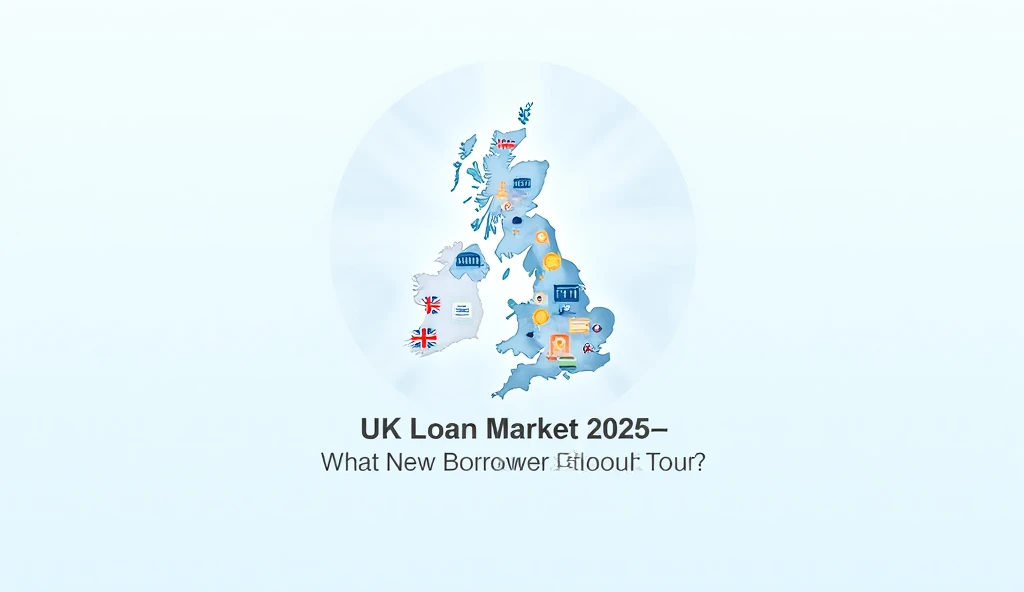The UK loan market in 2025 is evolving rapidly. From personal loans to mortgages, interest rates, and eligibility criteria, there are several changes that new borrowers need to be aware of before applying for credit. Understanding these factors can save you money, help you make smart borrowing decisions, and ensure your financial health stays strong.
In this guide, we’ll cover key trends in 2025, types of loans, eligibility tips, and how new borrowers can navigate the UK loan market safely.

Current Trends in the UK Loan Market
The UK loan market in 2025 is influenced by several economic factors:
- Interest Rates Are Stabilizing
After several increases in the past few years, the Bank of England has signaled a period of stabilization in interest rates. This affects personal loans, mortgages, and other borrowing options. New borrowers can now expect more predictable repayment costs compared to 2023–2024. - Rise of Online Lenders and Fintech
Fintech lenders and digital banking platforms are making it easier for new borrowers to access loans. Many of these platforms consider income, employment, and spending patterns, not just credit history. - Increased Competition Among Lenders
With more lenders entering the market, borrowers have access to better rates and flexible repayment terms. This is especially good news for first-time borrowers. - Greater Focus on Responsible Lending
Regulators are keeping a closer eye on lenders to ensure transparent fees and fair repayment terms. Borrowers are now better protected from hidden fees and predatory practices.
Types of Loans Available in the UK for New Borrowers
New borrowers in 2025 have several options to consider:
1. Personal Loans
- Amounts range from £500 to £25,000.
- Can be secured or unsecured.
- Typically repaid over 1 to 7 years.
- Interest rates for new borrowers are slightly higher but competitive.
Tip: Compare multiple lenders to find the lowest APR.
2. Payday Loans and Short-Term Loans
- Designed for urgent, small expenses.
- Borrow amounts of £100–£1,000 for a few weeks to a few months.
- High interest rates, often over 200% APR, so these should be used cautiously.
Tip: Only borrow what you can repay on time to avoid rollover fees and debt cycles.
3. Credit Builder Loans
- Perfect for first-time borrowers with no credit history.
- Small loans where repayments are reported to credit bureaus to build credit.
- Helps qualify for better personal loans or mortgages in the future.
4. Mortgages
- Mortgage rates have stabilized in 2025, offering predictable monthly payments.
- Many lenders now offer first-time buyer programs, including lower deposits or fixed-rate options.
Tip: Check eligibility requirements carefully and consider a mortgage broker for guidance.
5. Peer-to-Peer Lending
- P2P platforms connect borrowers directly with investors.
- Interest rates are competitive but may vary based on creditworthiness.
- Flexible terms and quicker approval make them appealing to new borrowers.
What New Borrowers Should Know About Eligibility
1. Credit History Matters, but Alternatives Exist
Traditional lenders check your credit history, but fintech lenders often consider employment stability, income, and bank transaction patterns.
2. Proof of Income is Key
Most lenders will ask for pay slips, bank statements, or self-employment income proof. A stable income increases your chances of approval and better interest rates.
3. Age and Residency Requirements
- Must be 18 or older.
- Must have a UK bank account.
- Some loans may require permanent residency or a UK address history.
4. Debt-to-Income Ratio
Lenders consider how much debt you already have compared to your income. Keep debt levels manageable for higher approval chances.
Tips for Borrowing Responsibly in 2025
- Set a Budget Before Borrowing
Know how much you need and how much you can repay monthly without stress. - Compare Multiple Lenders
Even a 0.5% difference in APR can save you hundreds of pounds over time. - Check Fees Carefully
Avoid loans with hidden fees, early repayment penalties, or rollover charges. - Start Small if You’re a First-Time Borrower
Small, manageable loans help you build a positive credit history. - Use Credit Builder Loans if Needed
If you have no credit history, consider a small loan that reports to credit bureaus to improve your credit profile.
How Interest Rates Affect New Borrowers
Interest rates determine how much your loan will cost overall. In 2025:
- Personal loan rates for first-time borrowers: ~6%–15% APR.
- Short-term or payday loan rates: can exceed 200% APR — use cautiously.
- Mortgage rates: typically ~5%–6% for fixed-rate options.
💡 Tip: Always check the APR (Annual Percentage Rate), not just the headline interest rate. The APR includes fees and gives a clearer picture of the loan cost.
Common Mistakes New Borrowers Make
- Borrowing More Than You Need – Leads to unnecessary debt.
- Ignoring Total Repayment Cost – Always check total repayments, including fees.
- Using Payday Loans as Long-Term Solutions – These loans are expensive and risky.
- Missing Payments – Even one missed payment can negatively impact credit history.
Conclusion
The UK loan market in 2025 is more accessible and competitive than ever, especially for new borrowers. There are many options, from personal loans and mortgages to fintech solutions and credit builder loans.
Key takeaways for new borrowers:
- Understand your borrowing needs and repayment capacity.
- Compare lenders and check interest rates carefully.
- Avoid high-cost payday loans for long-term needs.
- Build credit slowly to access better loan options in the future.
By following these guidelines, new borrowers in the UK can make informed decisions, avoid financial pitfalls, and build a strong foundation for their credit history.
